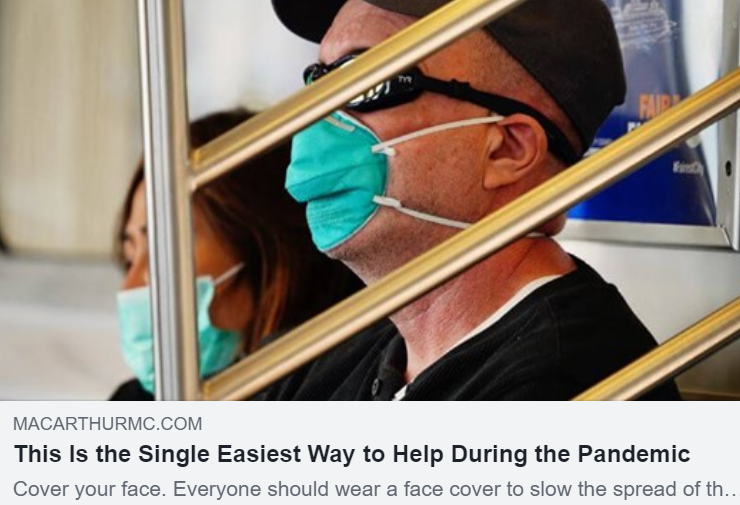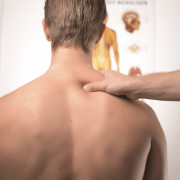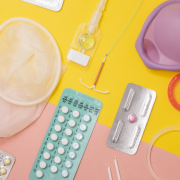Exposed to COVID-19; Now What?
Updated guidelines for managing exposure to Coronavirus.
COVID-19 cases are surging across the US, approaching 50,000 new cases per day. States like Florida, Arizona, California, and Texas show record-breaking numbers. Chances are increasing; each of us will be exposed to someone with COVID-19. It’s happening to people I know. Several friends reached out this week for guidance on what to do after their teenagers were exposed.
We need to talk about what to do if you’ve been in contact with someone with COVID-19 or begin to experience symptoms. Our gut instinct is to run off and get tested. But for the majority of those with viral symptoms, this is the wrong thing to do.
Testing may verify Covid-19, but a positive test for Covid-19 does not change the management. A negative does not change the recommendations either.
When a nonelderly patient without underlying medical conditions or respiratory distress has COVID-19 or has been exposed, the recommendations are home quarantine. Regardless of the test results, the management is two weeks of home isolation and supportive measures such as fluids, rest, and acetaminophen.
Unfortunately, Covid-19 is a new virus for which we don’t have a vaccine, effective medication, or baseline immunity.
What counts as exposure?
You have been exposed after any close contact with anyone who tested positive for COVID-19 or anyone who has symptoms of the disease. According to the CDC close contact means:
- You were within 6 feet of someone who has COVID-19 for at least 15 minutes
- You provided care at home to someone who is sick with COVID-19
- You had direct physical contact with the person (touched, hugged, or kissed them)
- You shared eating or drinking utensils
- They sneezed, coughed, or somehow got respiratory droplets on you
What do you do after an exposure?
Stay home and monitor your health.
- Stay home for 14 days after your last contact with a person who has COVID-19
- You do not need to get tested automatically. You and your doctor should make testing decisions together. After exposure or if you have symptoms, you will be placed on a 14-day quarantine regardless of the test results. Going to get a test exposes you and others to more potential spread. Contact a medical provider to determine if testing is warranted and to make arrangements for testing according to local availability and capacity.
- Watch for fever (100.4◦F), cough, shortness of breath, or other symptoms of COVID-19
- If possible, self-isolate away others, especially people who are at higher risk for getting very sick from COVID-19
- Look for emergency COVID-19 warning signs and seek immediate emergency medical care.
- Communicate with your doctor to evaluate any new onset of symptoms
- Avoid public transportation, ride-sharing, or taxis
- If you become sick, wear a face cover over your nose and mouth if you must be around other people. Masks should not be placed on young children under the age of two.

klenger istock by Getty images
What are emergency warning signs indicating the need for immediate care?
The CDC provides guidance on when to seek emergency medical attention. If someone shows any of these signs, seek emergency medical care immediately after first calling ahead to let the office or hospital know you are coming.
- Trouble breathing
- Persistent pain or pressure in the chest
- New confusion
- Inability to wake or stay awake
- Bluish lips or face
What do I do if my child has been exposed or has symptoms?
Having a sick child is terrifying for parents. Parents’ first instincts may be to take your child to an Emergency Department to get tested, but management at home is safe in most pediatric cases. The treatment is isolation, fluids, and rest. The concept that testing does not change management is especially challenging when parents are faced with a sick child.
Emergency care is needed if the child shows severe illness symptoms such as high fever or very low body temperature, shortness of breath, fainting, or confusion. If a trip to the emergency department is required, remember to call ahead and let the staff know you are coming.
Otherwise, the child should receive supportive treatment at home. Parents should contact their doctor or pediatrician for advice and continued monitoring of symptoms.
What are the symptoms of COVID-19?
Many patients have no symptoms at all. The safest course of action is for every American to live as though we are asymptomatic carriers. The sad truth is any one of us may be shedding the virus and putting others at risk.
About 80% of COVID-19 cases show mild symptoms or are asymptomatic. Symptoms include typical viral problems such as fever, body aches, dry cough, fatigue, chills, congestion, runny nose, and sore throat.
Many develop gastrointestinal symptoms such as loss of appetite, nausea, vomiting, and diarrhea.
Others develop neurological symptoms such as loss of smell, loss of taste, muscle weakness, numbness, tinglingly in the hands and feet, dizziness, confusion, delirium, seizures, and stroke.
Approximately 20% of COVID-19 patients develop severe symptoms requiring hospitalization. Severe symptoms include high fever, severe cough, shortness of breath, pneumonia, and low blood pressure. Those over age 60 and people with underlying medical conditions such as diabetes, heart disease, respiratory disease, or hypertension are at higher risk of developing severe illness.
The case fatality rate is decreasing, indicating we are getting better at treating those who get sick. But as testing increases around the country, we must remember the positivity rate is also rising. The increase in cases is not due to the increased testing capacity. A higher percentage of people getting tested have the virus.
Recent data from UT Southwestern Medical Center in Dallas shows an increase in admissions of young patients without risk factors. This shift towards the younger and healthier is an important reminder to all of us to continue handwashing, social distancing, and wearing a mask.
How do you get tested to know if you have COVID-19 right now?
To detect the virus, a test must be performed to identify viral genetic material. A PCR test, from saliva or a nasal swab, is used to detect the virus’s active presence. There are multiple technologies available in the US, and each has varying degrees of accuracy.
The key thing to know is a positive test is reliable. If a test result comes back positive, it is almost certain that the person has COVID-19. If a test returns a negative result, then you are not off the hook. A negative test does mean you do not have COVID-19.
Regardless of your test results, if you have COVID-like symptoms self-isolate at home, rest, hydrate, and wear a mask when interacting with family members.
If your symptoms do worsen, contact your doctor for further guidance.
How do you get tested to know if you had COVID-19 in the past?
Our bodies develop antibodies after we are exposed to a virus. Antibodies are special proteins our immune system uses to fight infection. We are hopeful that our immense systems will develop neutralizing antibodies to provide long term protection against coronavirus. We have not proven if this is true with COVID-19, but many studies are in progress.
Blood tests can be done to try and detect Coronavirus specific antibodies. Unlike nasal swabs and saliva tests, blood tests are not used to detect active infection. The antibodies do not appear until at least 5–10 days after infection. Antibody testing detects a past infection.
People who have neutralizing antibodies may donate plasma. Antibodies from plasma can be used to treat some patients sick with COVID-19. We are hopeful these antibodies will prove to provide long term immunity.
Each day scientists learn more about this virus. Until we develop a vaccine, effective medication, or a cure, we all must do our part. Social distancing, hand hygiene, and face coverings are our most effective tools to protect ourselves and each other.
These steps may be a small inconvenience, but these minor alterations may potentially save someone else’s life.
We all must do our part.
Thank you to BeingWell for publishing this article on Medium.
Blog Author: Dr. Jeff Livingston
Main Blog Photo By: Maxpetac Istock by Getty













